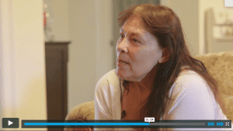It’s not about having a lower bill. It’s about having money for what really matters.
For so long energy efficiency messaging has been strictly about financial benefits of participation. “Lower your energy bill!” or “Save energy, save money.” (Sound familiar?)
But the conversation is changing. As an industry, we’re starting to understand that perhaps the “non-energy side of energy” is where the real motivation lies.
And this makes sense. Customers are not thinking about “energy.” And unless their bill is inconsistent with their average payment, they’re not even thinking about the bill. (Except for paying it on time.)
Accenture reports that people spend, on average, only nine minutes a year interacting with their utility. They’re too busy balancing all the ways they use energy (on the things that matter) to think about their actual consumption of it.
So we asked people about lower bills, savings and what they would do with the money. WATCH some of the highlights here.
It's clear to us that there's an opportunity to engage customers in a different way when it comes to savings.
Eighty-eight percent of participants in our 2014 consumer research stated that the non-financial benefits of energy efficiency would motivate them to make improvements and/or upgrades to their homes. (88%!!)
In 2015, UCLA has also published a study showing people who regularly received communications on how much money they could save made virtually no change. While customers who received messages focused on non-financial benefits caused them to cut their energy use by 8%. (And 19% in households with children living in the home!)
At last year’s BECC conference, we listened to George Loewenstein discuss the emotional state of the industry (or lack thereof); he talked about how emotions reprogram us fundamentally, and that real changes are only made through emotional reactions. So, why is the industry largely talking to customers in an unemotional way?
As E.E. marketers, we believe in a balanced conversation. We need to hook customers with the emotional drivers (those non-financial benefits – the things they can actually do with their savings) and support them with rational arguments.
Rational arguments include financial incentives and manageable costs.
Motivating customers in a low-interest category is hard. But, how did car insurance companies do it? We’re not suggesting you put a camel in your next ad, but we are suggesting this:
#1 – Get the attention of your customers through the emotional, personal benefits of energy efficiency. Focus on the things that they actually care about.
#2 – Support with rational arguments like financial incentives and manageable costs that they can trust. Guarantee these benefits so customers know they can trust it.
--
KSV has more than a decade’s experience communicating about energy efficiency programs and products. Maybe we can help you. Get in touch with Lauren Bell to talk about your current challenges and opportunities, and we’ll work on some solutions.
KSV’s 2015 consumer research has also been featured on: Utility Dive, Fortnightly, Energy Central, Intelligent Utility and Energy Efficiency Markets.
Lauren Bell / Engagement Manager / lbell@ksvc.com / 802.862.8261

